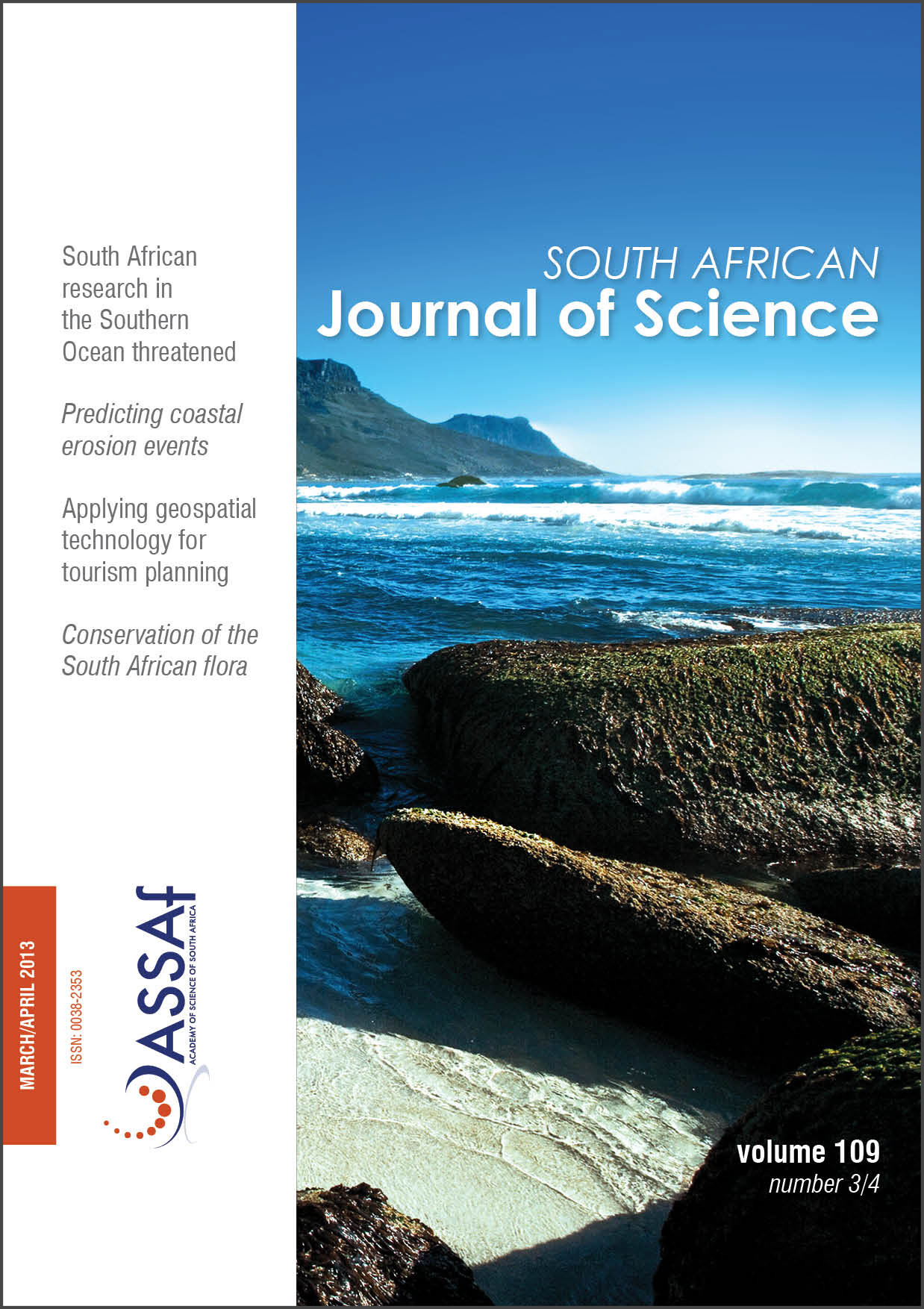Taxonomic research priorities for the conservation of the South African flora
DOI:
https://doi.org/10.1590/sajs.2013/1182Keywords:
threatened species, IUCN Red List, taxonomic revisions, taxonomic productivity, Global Strategy for Plant ConservationAbstract
Taxonomic revisions, monographs and floras are the most important, and often the only source of data for assessing the extinction risk of plants, with recent revisions contributing to more accurate assessments. The recently completed Red List of South African plants involved an overview of the taxonomic literature pertaining to the South African flora, providing an opportunity to identify critical gaps in taxonomic coverage. In this study we identified taxonomic research priorities for effective conservation of South African plants. Priorities were identified at genus level, according to time since last revision, level of endemism, collecting effort, proportion of taxa included in revisions, and specimen identification confidence. Although the results indicate that 62% of the flora has been recently revised, revisionary taxonomic output has declined drastically, particularly in the past 10 years. This decline is a result of a decrease in revisionary productivity per taxonomist and not a result of a decline in the number of working taxonomists. The family Aizoaceae is the top priority for taxonomic research with 55% of taxa in need of revision, followed by Hyacinthaceae with 34% of taxa not yet revised. Ericaceae, Euphorbiaceae, Rutaceae, Malvaceae, Asteraceae and Acanthaceae are also priorities with over 30% of taxa last revised before 1970. We recommend the reinstatement of the Flora of Southern Africa project in an online format in order to centralise South Africa’s existing taxonomic information and reinvigorate revisionary taxonomic study. This project will allow South Africa to fulfil its commitments to the Convention on Biodiversity by achieving Target 1 of the Global Strategy for Plant Conservation.
Downloads
Published
Issue
Section
License

All articles are published under a Creative Commons Attribution 4.0 International Licence
Copyright is retained by the authors. Readers are welcome to reproduce, share and adapt the content without permission provided the source is attributed.
Disclaimer: The publisher and editors accept no responsibility for statements made by the authors
How to Cite
- Abstract 635
- PDF 576
- EPUB 184
- XML 291
- Supplementary Material 550













.png)